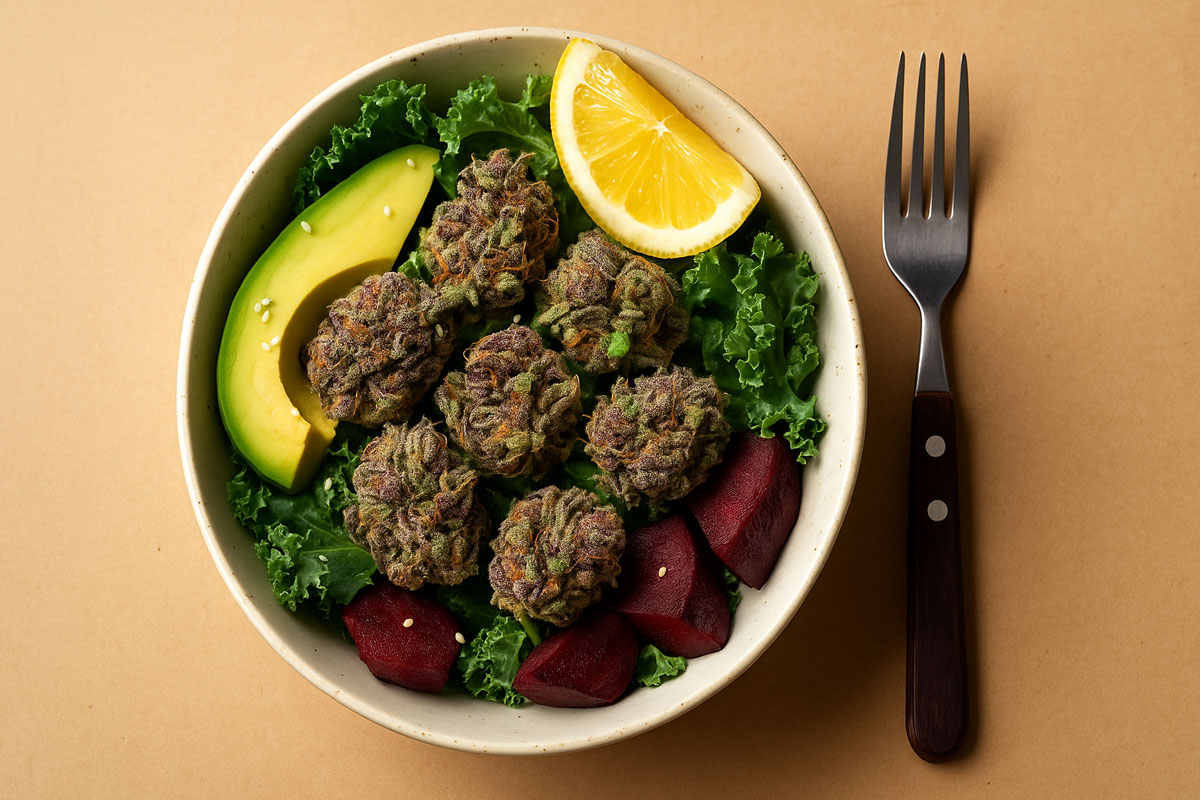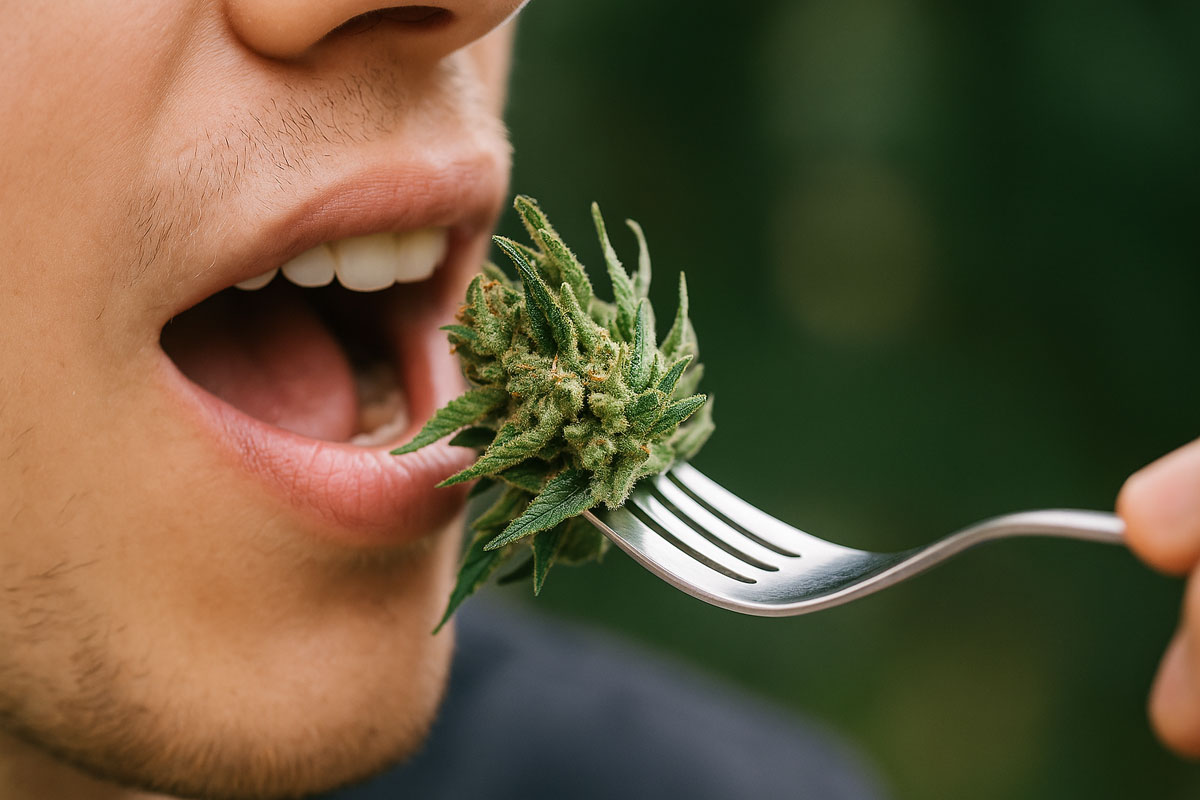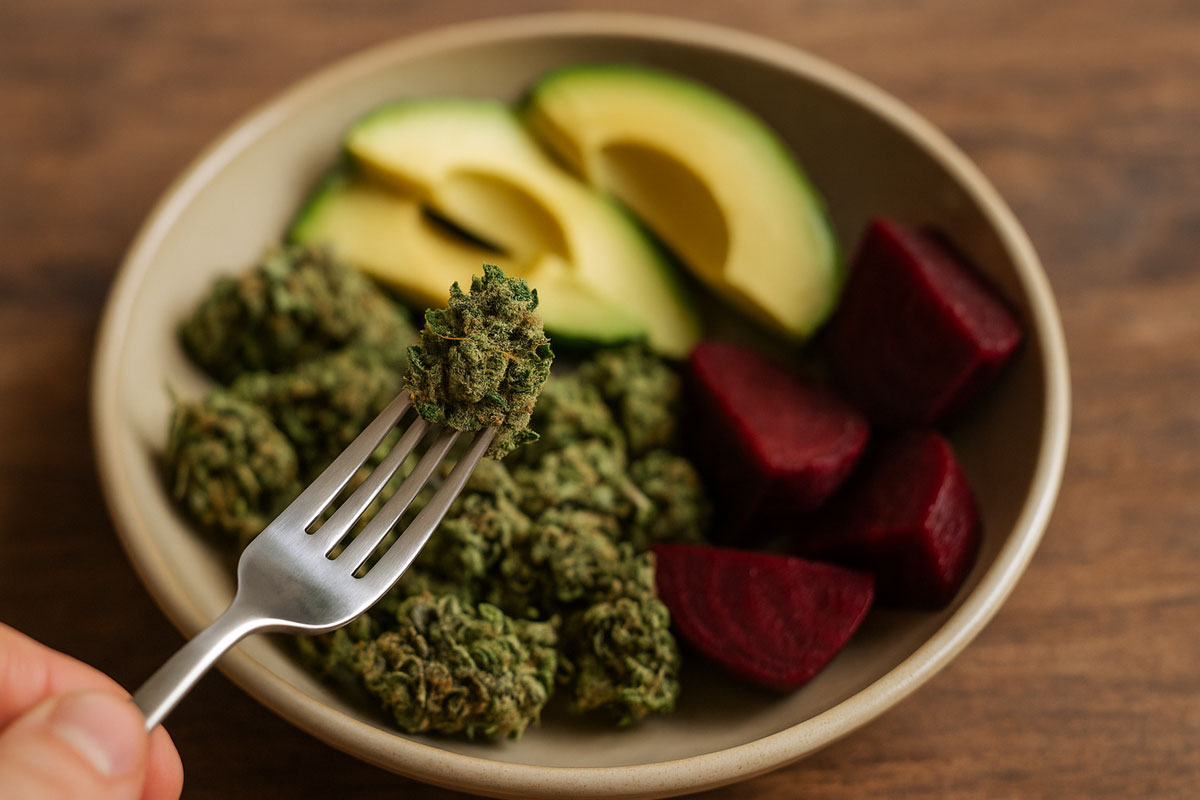Eating Raw Cannabis: Benefits and What You Should Know

It’s quite straightforward. “Raw cannabis won’t produce a high because it hasn’t undergone decarboxylation,” explains Dr. Junella Chin, an integrative cannabinoid medicine physician. “This means that the non-psychoactive cannabinoid THCA has not been converted into the psychoactive THC through a heating process.” Nonetheless, Dr. Chin, along with many advocates and researchers, believe that consuming raw cannabis may offer distinct health and wellness benefits.
Raw cannabis contains three cannabinoids with a carboxylic acid group attached—delta-9-tetrahydrocannabinolic acid (THCA), cannabidiolic acid (CBDA), and cannabigerolic acid (CBGA)—which are thought to have therapeutic potential. “Researchers suggest that THCA may act as an anti-inflammatory agent,” Dr. Chin adds.
Positive Effects on Brain Cells
A study published in the British Journal of Pharmacology supports Dr. Chin’s claim, indicating that THCA might protect brain cells, opening avenues for research into its applications for neuroinflammatory and neurodegenerative diseases.
Immune System Support
Research from International Immunopharmacology examined the effects of unheated cannabis extract, finding that THCA may play a role in enhancing immune system function.
Reducing Nausea and Vomiting
Additional studies on THCA’s anti-nausea effects in animal models, published in the British Journal of Pharmacology, demonstrated its effectiveness in alleviating nausea and vomiting. Researchers even proposed that THCA could be a more potent alternative to THC in this regard.
Researchers have also demonstrated that low doses of cannabidiolic acid (CBDA) exhibit anti-nausea and anti-vomiting properties, and have found that CBDA can enhance the effectiveness of the anti-nausea medication Ondansetron.
Additionally, terpenes—aromatic compounds in cannabis—are sensitive to high temperatures. Consuming raw cannabis preserves these terpenes in their natural form, allowing access to therapeutic phytochemicals like limonene and myrcene, which are known to promote relaxation and overall wellbeing.
Completing the chemical profile of raw cannabis are flavonoids. These pigments, which give plants their color and attract pollinators, also serve to protect the plant from UV radiation and pathogens.
Key flavonoids present in raw cannabis include cannflavin A and B, known for their anti-inflammatory properties; kaempferol, which supports the body’s antioxidant defenses against free radicals; quercetin, which may reduce inflammation, alleviate allergy symptoms, and lower blood pressure; and anthocyanins, compounds that can help lower blood pressure, improve visual acuity, inhibit cancer cell growth, prevent tumor formation, and exhibit both anti-inflammatory and antibacterial effects.
What qualifies as raw cannabis?

Dr. Rachel Knox, co-founder of the American Cannabinoid Clinics, explains that omega-3 and omega-6 fatty acids serve as the building blocks for our body’s endocannabinoids. “Anandamide and 2-AG are derived from omega-3 and omega-6 fatty acids, while OEA and PEA come from omega-3. All of these compounds possess neuroprotective properties. Because our bodies cannot produce enough essential fatty acids on their own, we must obtain them through our diet.”
It’s important to note that these benefits apply to fresh cannabis buds and leaves. Once cannabis is dried, cooked, steamed, smoked, or vaped, its cannabinoids and terpenes degrade, reducing nutritional value and therapeutic potential.
For many, the idea of consuming fresh cannabis buds and leaves might be unfamiliar or unappealing. Fortunately, chefs are embracing this trend by incorporating raw cannabis into creative culinary dishes.
“At Cafe Cannal in New York City, we blend raw cannabis leaves into our green smoothies,” shares chef and founder Maya Hayashi. “We source young hemp leaves from local Hudson Valley farmers and carefully wash them to remove any residues from packaging and shipping.”
Hayashi adds, “Our signature Cannabis Leaf Salad features raw young cannabis leaves mixed with kale, avocado, roasted beets, and Meyer lemon dressing. We also prepare specialty herbal tea blends using raw cannabis—non-psychoactive forms of CBD and THC known as CBDA and THCA.”
Juicing Raw Cannabis
Juicing raw cannabis requires a careful balance. While it takes a significant amount of leaves to produce a single serving, using too many can result in a bitter taste. “Think of it as microdosing,” explains Maya Hayashi. “You want to add enough leaves to enhance the recipe without overwhelming your taste buds.”
Dani Fontaine, an experienced advocate, has been juicing raw cannabis for years.
“My inflammation is at its lowest ever,” she shares. “Every morning, I blend raw cannabis buds and leaves into my juice. I juice everything except the stalk because the terpenes are concentrated in the buds, and the leaves provide essential minerals and nutrients.”
With deep knowledge of the plant, Dani founded Colorado’s first organic edible company and the Colorado Hemp Project. She regularly recommends juicing to her patients, many of whom travel long distances to try her latest Nature’s Root products.
Consuming raw cannabis supports the endocannabinoid system—the body’s regulatory network that maintains balance and interacts with cannabis—without causing intoxication. However, it’s critical to be mindful of your cannabis source.
Cannabis Juice Safety Considerations
Cannabis plants can absorb contaminants from the soil through phytoremediation, storing harmful substances in leaves, stalks, or stems.
Consuming any raw food carries risks. Studies have detected pathogens such as Salmonella and E. coli on cannabis samples. Additionally, chemical pesticides used by some growers may leave residues on flowers and leaves. To avoid these dangers, only consume cannabis grown organically without chemical treatments or manure.
Legal cannabis markets often require lab testing to ensure flowers are free from toxins, pesticides, heavy metals, and other contaminants. For safety, always purchase raw cannabis from licensed dispensaries.
Could Raw Cannabis Become a New Superfood?

Think of plant medicine holistically—there’s a difference between isolated vitamins and consuming the whole plant. While supplements can fill dietary gaps, they cannot fully replicate the complex benefits of consuming cannabis in its natural form. At best, supplements represent only partial aspects of the intricate compounds nature provides.
“You want to consume natural sources of cannabis,” says Dr. Junella Chin. “Plants offer synergistic effects from their complex compounds and a bioavailability that’s difficult to replicate or measure in a lab.”
Today, hemp is widely recognized as a superfood by many nutrition experts, including Dr. Chin. Raw cannabis has the potential to join this category as a functional food. When eaten like a leafy green or used as an herb, your body gains from the complete plant profile. Think of cannabis like kale—with various varieties offering different nutrient profiles.
Consulting Healthcare Professionals
It’s vital that patients discuss cannabis use with healthcare providers to ensure safe and effective wellness practices. Clinicians must be equipped to educate and guide patients toward personalized cannabis use.
As cannabis evolves from plant-based medicine to nutritional food, consulting a registered dietitian or nutritionist knowledgeable about cannabis is highly recommended.
